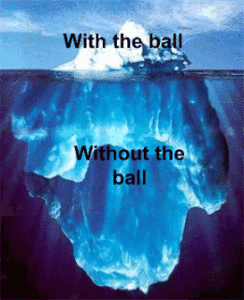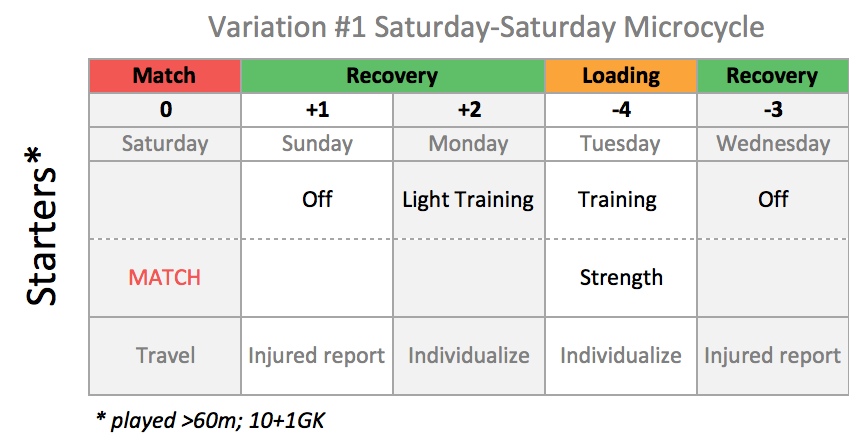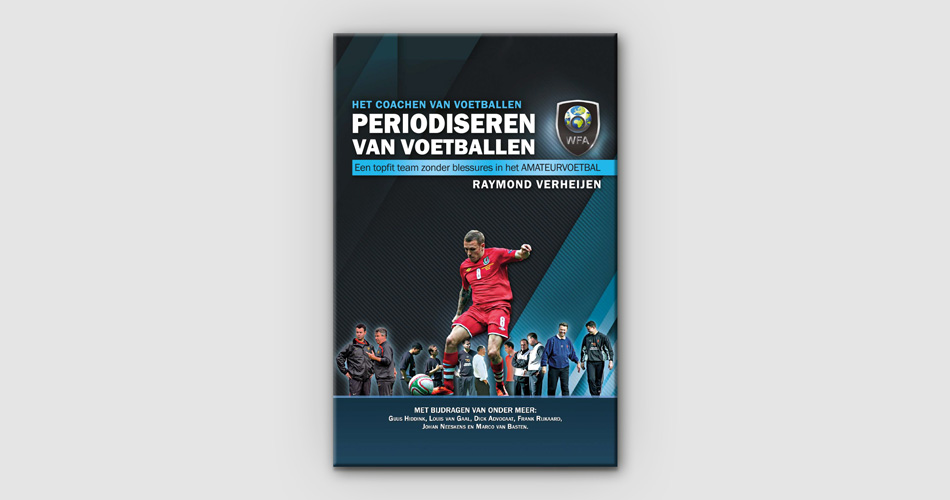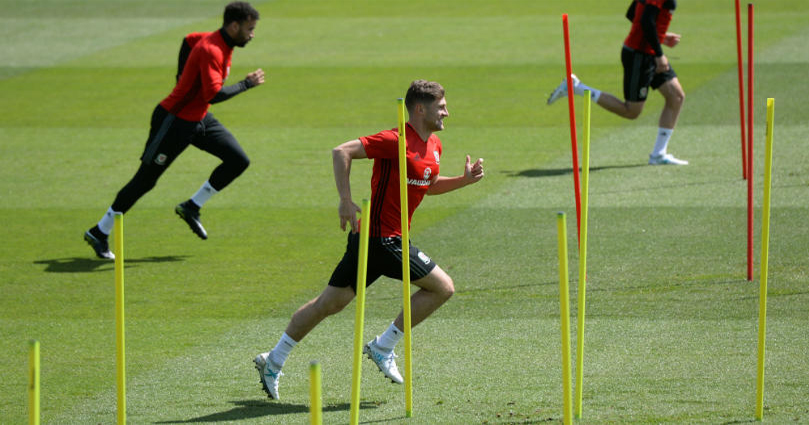Planning and Programming of Training in Sport Games
Introduction
As strength and conditioning coach in team sports (a sub-group of sport games) I wanted to express my opinions regarding problems to planning and programming of training in sport games and present a possible solution. Before you start reading this article, please note that it represents my thoughts on the problems and possible solutions and that you should look at it as ‘critical thinking discussion’ and make your own solutions. As always, I somehow needed to put my thoughts on paper (don’t all writers has similar ‘urge’ to do so? Like something is making them to do it… plain weird!) to fulfill my strong rationality and possibly gain feedback on it via healthy critical discussion which I hardly await. Look at this article this way, not something written in stone or another internet-guru-said-so dogma.
Classification and structure of sport games
When one friend of mine, Ognjen Milić called our common friend Jovan Buha and asked what I was doing, his sarcastic remark was „Mladen is doing some classifications!“. I am famous within the circle of my friends and athletes to be very ‘pedantic’ regarding terms and classifications, since wrong or poorly defined terms lead to wrong thoughts and wrong thoughts finally lead to wrong actions and decisions. This can happen very often, especially when people use same words for different stuff, or argue about the same stuff with different terms. It happens all the time.
So, to fulfill my extreme rational ‘fetish’ of classifications, before we even start to identify problems of planning in sport games, we need to deal with… drums please… classification and terminology (yeah, I know – Boring, but important and I will try to keep it short and interesting, or at least, as Lyle McDonald pointed out, make you fall asleep a lot easier). Having this well defined will as a result provide us with the tool with which we can define problems and solutions without too much confusion.
For sport games classification I will use classification template from „Teaching Sport Concepts and Skills“ book which is a recommended resource (see the literature and suggested reading section).
The authors classified sport games to following categories: (1) Invasion games (2) Net/Wall games, (3) Striking/Fielding games and (4) Target games.
| Invasion games | Net/Wall games | Striking/Fielding games | Target games |
|---|---|---|---|
|
Basketball Netball Team handball Water polo Soccer Hockey Lacrosse Rugby Football Ultimate Frisbee |
Net Badminton Tennis Table tennis Pickleball Volleyball Wall Racquetball Squash Handball |
Baseball Softball Rounders Criket Kickball |
Golf Crouquet Bowling Lawn bowling Pool Biliards Snooker |
Here is the short description of each game category from the book (page 20-21).
Invasion games. In invasion games teams score by moving a ball (or other projectile) into another team’s territory and either shooting into a fixed target (a goal or basket) or moving the projectile across an open-ended target (across a line). To prevent scoring, one team must stop the other from bringing the ball in its own territory and attempting to score. Solving these offensive and defensive problems requires similar tactics in various invasion games even though many of the required skills are different. For example, while players must understand the need to shoot in order to score in both floor hockey and team handball, the striking and throwing skills used to shoot in these two games are very different. Movement off the ball is common across all invasion games. Offensive players must move without the ball and position themselves so that they can receive passes from teammates and threaten the goal. The defensive components of invasion games are also similar in that players must mark or guard opponents and must pressure the ball carrier before attempting to win the ball. Effective decision making is critical, with players deciding whether to pass, shoot or move with the ball and deciding to when, where and how to move when they do not individually possess the ball.
Net/Wall games. In net/wall games, teams or individual players score by hitting a ball into a court space with sufficient accuracy and power so that opponents cannot hit it back before it bounces once (as in badminton or volleyball) or twice (as in tennis or racquetball). In all these games shot placement is at premium in that players must hit to an open space in order to win points. Court awareness is important so that a player can move an opponent around the court in order to create the spaces needed to attack. On the other hand, players must also defend spaces, usually on their side of the net, to best position themselves to return the ball. Player needs to decide on their own strengths and weaknesses, and of those of opponents, before selecting and executing skills. Decisions by any player must also account for the court positioning of all players involved in a game.
Striking/Fielding games. In striking/fielding games such as softball, baseball and cricket, players on the batting team must strike a ball with sufficient accuracy and power so that it eludes players on the fielding team and gives the hitter time to run between two destinations (bases or wickets). As in net/wall game, player attempt to place the ball in gaps between fielders in order to maximize the run scoring of each hit. Decisions regarding where (accuracy) and how (power or placement) to hit a ball are based on the positioning of the fielders and on the type of ball or pitch delivered. To prevent scoring, players on the fielding team must position themselves so they can gather and throw a ball to the base or wicket to which the hitter is running before the hitter reaches it. Fielding decisions, particularly those concerning a fielders positioning, are based on the relative strengths and weaknesses of the pitcher or bowler and of the batter, and also (perhaps) on the score in the game.
Target games. In target games, player score by throwing or striking a ball to a target. Some target games are unopposed (e.g. golf, tenpin bowling) while others are opposed (e.g. lawn bowling, croquet, shuffleboard) in that one participant is allowed to block or hit opponent’s ball. In opposed target games, players prevent scoring by hitting opponent’s ball to disadvantageous position relative to the target. Decision making is much more individualized than in other game categories, primarily focused on the player’s own personal strengths and weaknesses or perhaps on equipment, such as in selecting a club before a shot in golf.
The take home message here is that the sports from the same game category (e.g. soccer and field hockey) shares similar if not the same tactical problems, yet they differ in technical/movement solutions to those problems. This is the foundation of the concept of transfer of tactical knowledge in games (see „Teaching Sport Concepts and Skills“ for more info on this very subject). So, the next time someone tells you „You know, my sport is really special and really different from other sports“ you can show him finger (note: this is a joke!). Taking also into account physical preparation needs of sport games, we can conclude that sport games are more similar than different, but remember: the devil is in details!
On the following picture I tried to develop a conceptual scheme of the basic structure of all sport games, which we will use for further discussions, where I will mainly refer to examples from invasion and net/wall games.

As already noted, games (especially from a same category) share similar tactical problems, which can be further divided into problems of (1) scoring, (2) preventing scoring, (3) restarting play and (4) transitioning. This is the same as phases of the game: (1) offense or attack phase, (2) defense phase, (3) restarting play (e.g. goal kick-off, throw-in, free kick, corner kick) which can be in offense or defense phase for a given team and (4) transition. Transition is a short, but very important phase, between attack and defense phase and vice versa, where the players must re-organize (in tactical and strategic sense, but also from one psychological/mental state to another) from attack phase to defense phase (e.g. when they loss a ball possession) or defense to attack phase (e.g. when they steal a ball). In basketball, for example, transition phase is very well defined (the carry-over of the ball toward opposite basket/half of field) compared to volleyball, where transition phase happens every time the ball goes over the net and is more subtle. Anyway, transition phase is very important and as a proof of this there is a higher and higher percentage of the scores done through fast attack and counter-attack. Thus, for a team to be successful it must also have very quick and efficient transition phase.
Since the mentioned phases are common to all sport games, individual games do have their own special elements which are sub-groups of the mentioned four phases of the game. Ok, now the mentioned „my-sport-is-special“ guy can show me the finger (note: this is a joke!). On the following picture there are conceptual elements of volleyball game. I know this is not important for the further discussion, but I wanted to you my sleazy graphs and volleyball knowledge (note: this is a joke too!).

Without going into volleyball structural analysis, the take home point is that there is a lot of similarities between games in terms of tactical problems, and where they differ are solutions to those problems, especially in on the ball skills or technical elements/skills.
Solutions for mentioned tactical problems are (1) decision making or tactical skills, (2) on the ball skills or technical elements/skills, and (4) off the ball movements or movement patterns.
Decision making can be further divided to (1) decisions while in possession of the ball (team on attack and defense) and (2) decisions while not in possession of the ball (team on attack and defense). It is interesting to note that most of the time a given player is without the ball and only small percentage of the game he is in the possession of the ball. This is why decisions while not in possession of the ball (both in attack and defense) and off the ball movements are very important, so much that it can be said that the games are played without the ball. Anyway, even being at very low percentage of the game, on the balls skills and on decision while in possession of the ball are the ones that usually decide on the final outcome. As we said, devil is in details. You can look at this as famous „iceberg under water“ concept.

What we usually see when we watch a given game is the player that is in the possession of the ball and a small area around him, because that’s where the action is. But, as iceberg on the picture shows, decisions while in possession of the ball and on the ball skills are only the tip of the iceberg (important though; remember the devil?), yet the gross amount of the game is played ‘under the surface’ or without the ball. Laypeople don’t see this, and even a lot of coaches fall into trap by using short-sighted approach to qualitative analysis by looking only at the ‘tip of the iceberg’.
One example of this ‘spotlight phenomena’ (please put copyright on this term) is that when looking at the player in possession of the ball and the players around him, an observer will for sure note how much there is high-intensity movements, running and stuff, which can lead to poor training suggestions (e.g. utilizing too much glycolitic work). Even if inside the ‘eye of the cyclone’ (sorry for being poetic) there is all the rage, at a bigger scale players are trotting around most of the time. Ten to fourteen kilometers in ninety minutes is the number that is usually thrown as a result of time-motion analysis of soccer. Well, that is on average 6.6 to 9.3 km/h for the duration of the game. You are right, that is a real slow jog, even a walk. More important, the goalkeeper is doing similar values.
This is why seeing the forest from the trees is so important, along with having perfectly defined terms, classifications and other fancy stuff I am good at (note: this is a joke), because this will not lead us to poor thoughts and poor actions and training decisions.











Responses